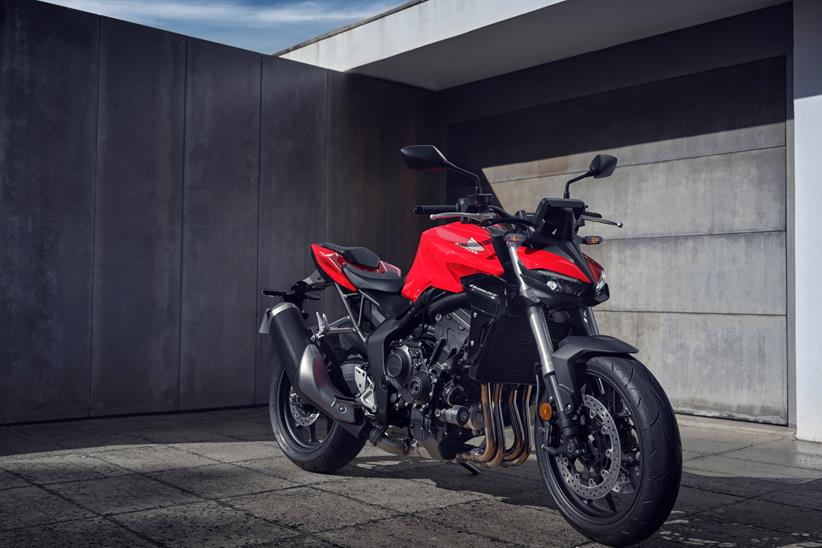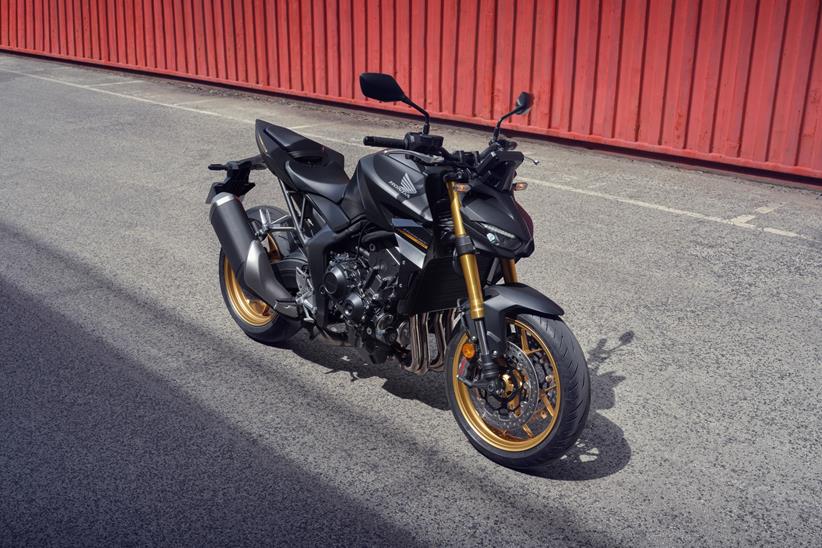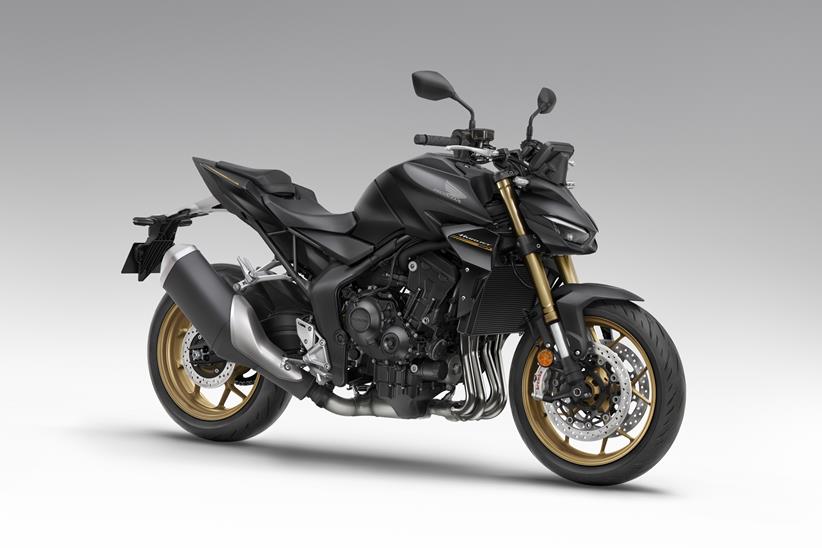Superbike to super-naked | How Honda tweaked the 2017 Fireblade engine for the 2025 CB1000 Hornet
Slotting a previous-generation superbike engine into a naked bike chassis has been an easy shortcut to building a high-performance roadster for years – Honda’s original CB900F Hornet did it by reusing the 919cc FireBlade engine at the start of this millennium – but modern emissions rules mean it’s not as simple as it once was.
So how have Honda turned an engine designed for a previous set of emissions rules into one that’s still relevant and legal under the latest Euro5+ regime?
Back in 2017, the then-new ‘SC77’ model marked a substantial step forward for the Fireblade, upping peak power from 168bhp to 189bhp while simultaneously coming into line with the newly-introduced Euro4 emissions limits.
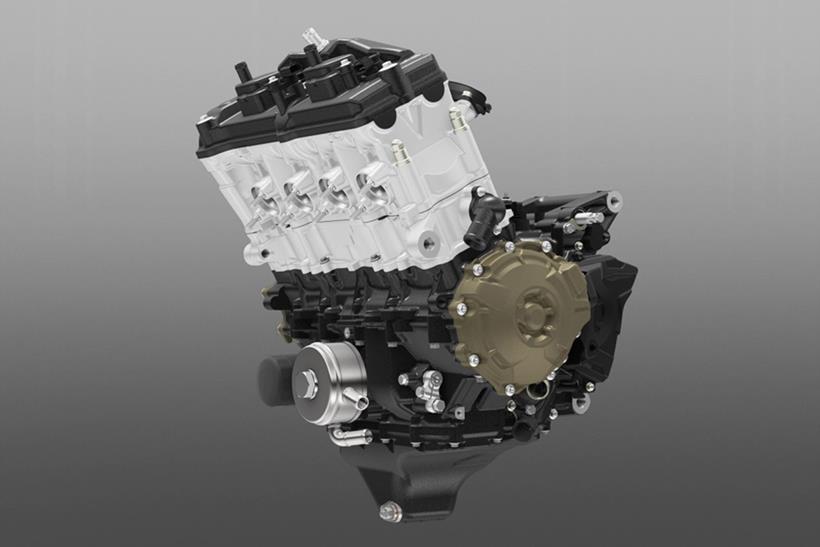
- Related: 2017 Honda Fireblade review
That peak power still seemed a little low compared to rivals that had been knocking on the door of 200bhp for years, but Honda’s modest approach to engine design is one of the reasons that the motor is now so well suited to its new home in the CB1000 Hornet.
One of the reasons to use the SC77’s engine as the basis for the new CB1000 motor is that Euro4 itself represented a massive change from the Euro3 rules that had been in place for a decade, slashing limits for carbon monoxide and hydrocarbons by more than 50%.
Euro5, introduced in 2020, made further, more nuanced cuts, and Euro5+, in force in 2025, focuses on ensuring engines maintain their emissions performance for longer, rather than reducing the absolute limits even more.
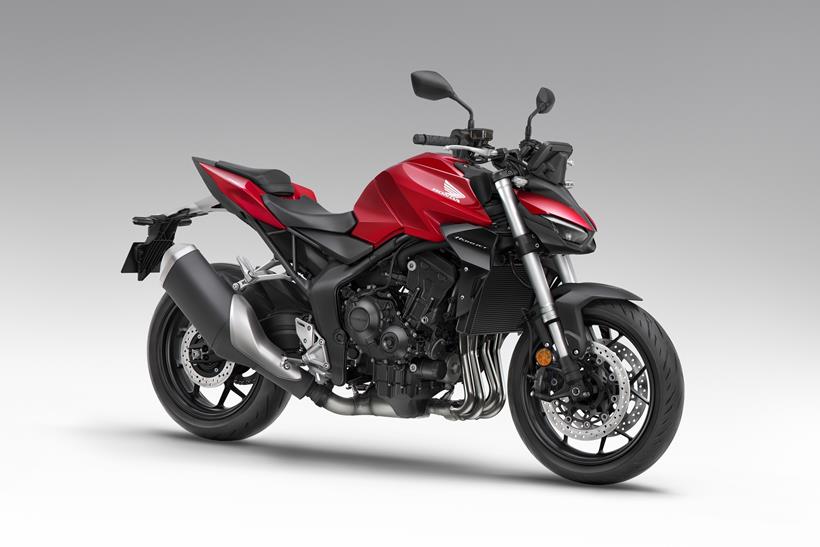
Euro5+ doesn’t change emissions limits from 2020’s Euro5 but it introduces durability requirements so bikes need to be able to hit those limits for 35,000km (21748 miles), not just when they’re new.
With a 76mm bore and 55.1mm stroke, the SC77 motor was conservative even at the time, and more so when compared to today’s top superbikes. It also had max torque of 86lb.ft at 11,000rpm. The Hornet has a bit less overall at 77lb.ft – but peaks 2000rpm lower at 9000rpm, meaning usability is improved.
The latest Honda Fireblade has a MotoGP-matching 81mm bore and 48.5mm stroke to maximise revs, valve area and peak power. But for a more street-oriented bike like the Hornet those older figures are ideal.
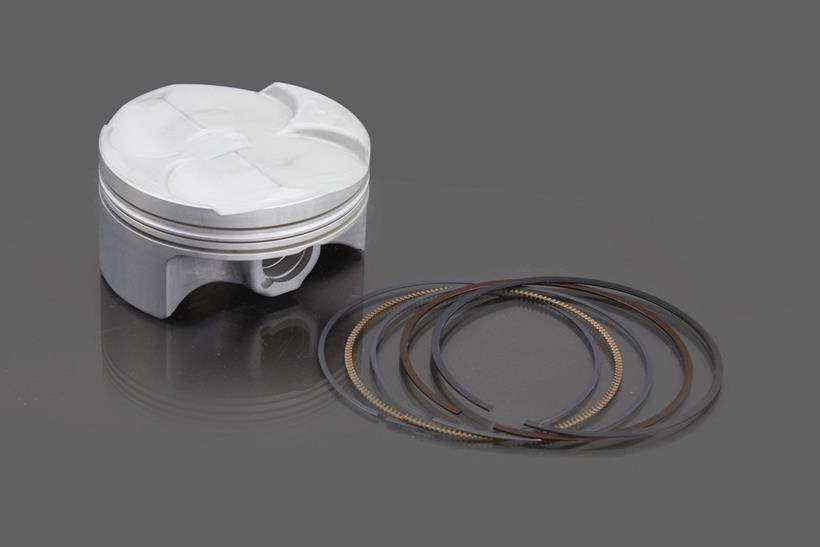
Reducing revs is a key element to cutting costs, emissions and helping meet the longevity requirements of Euro5+, so for the Hornet application Honda has used smaller throttle bodies – down from 48mm to 44mm – to increase intake velocity and boost midrange torque.
Reduced valve lift and revised timing have a similar effect, and Honda have dropped the compression ratio from 13:1 to just 11.7:1, cutting combustion temperature and reducing the risk of preignition.
The result? Peak power at 11,000rpm instead of 13,000rpm and max torque at 9000rpm instead of 11,000rpm. Lower rpm means less stress, so the Hornet gets away with cheaper, heavier steel inlet valves where the old Blade used titanium ones, while further cost-savings appear in aluminium rather than magnesium engine covers.
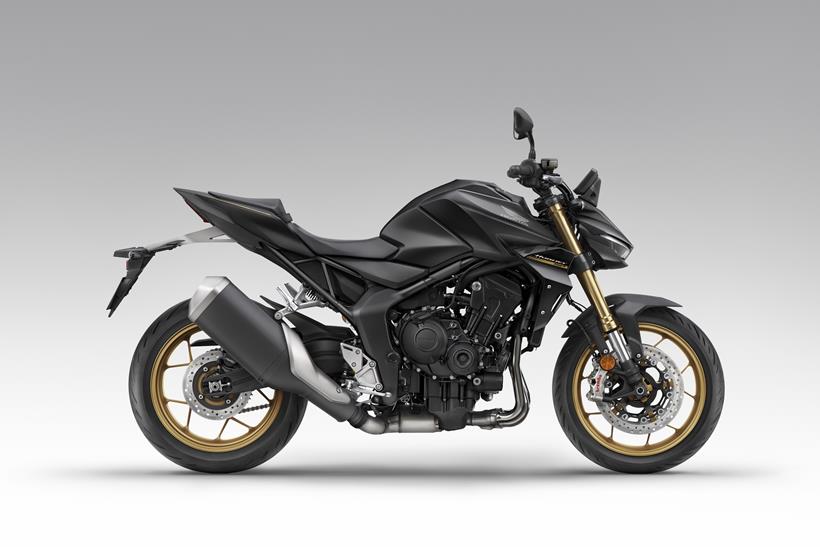
- Related: Honda CB750 Hornet review
At 149.7bhp the Hornet’s max power and peak torque are also down compared to the old Fireblade, the figures are still easily enough to sit near the top of the class.
And the very best bit about repurposing an old Blade engine for the new Hornet? It cuts R&D and tooling costs, which pays off for customers in the form of a lower price tag.
